What are the three types of compaction? - HENGDA RIC
updatetime:2023-02-15 13:40:43 pageviews:328views
The method of compaction is primarily of four types such as kneading, static, dynamic or impact and vibratory compaction. RIC is an acronym that stands for Rapid Impact Compaction. It involves a machine, an excavator, a 50 tonne excavator, that has a purpose-built attachment that undertakes what is called Rapid Impact Compaction. Its purpose is to, basically compact loose materials in the ground underneath where we are trying to build the road.
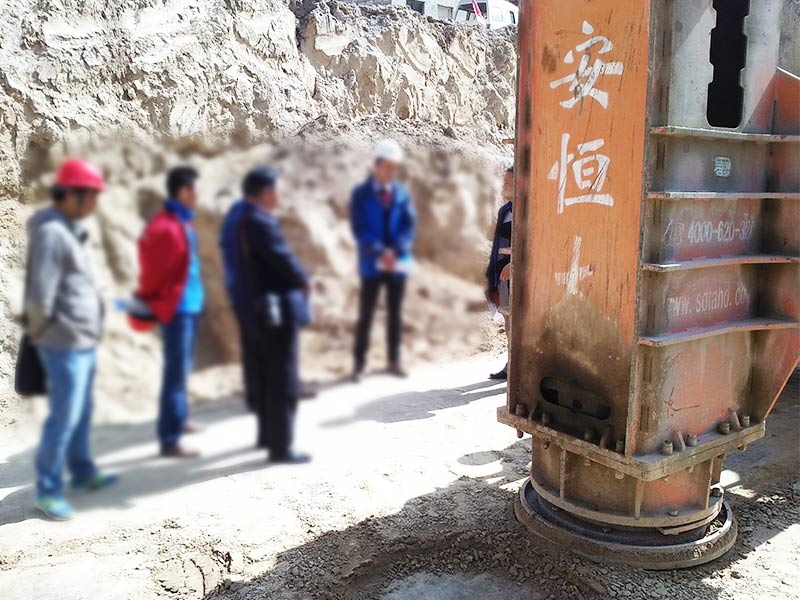
The compaction process can be optimized using an advanced GPS logging system. Using an advanced data logger located inside the cabin, the operator of the RIC rig can easily adjust the compaction energy in terms of the dropping height and the number of blows. He can also record the cumulative settlement, the settlement per blow and the applied energy.
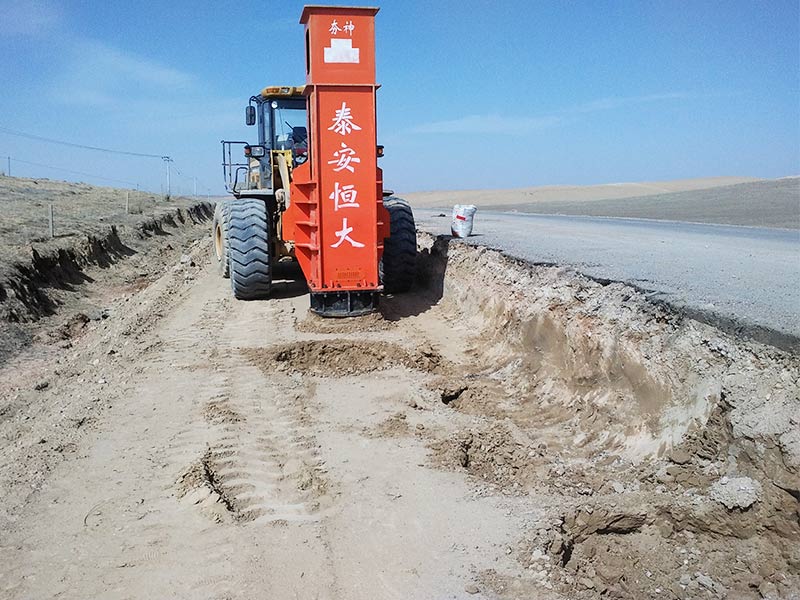
This compaction energy brings the soil particles into a more densely packed structure. The compaction energy is transmitted safely and efficiently as the compaction foot remains in contact with the ground. No flying debris occurs during the compaction process. The hammering of the foot by the impact weight is the reason of the sub-soil compaction. Indeed, the huge amount of energy developed upon the hammering process and transmitted to the ground through the foot, pushes the backfilling material into a denser structure.
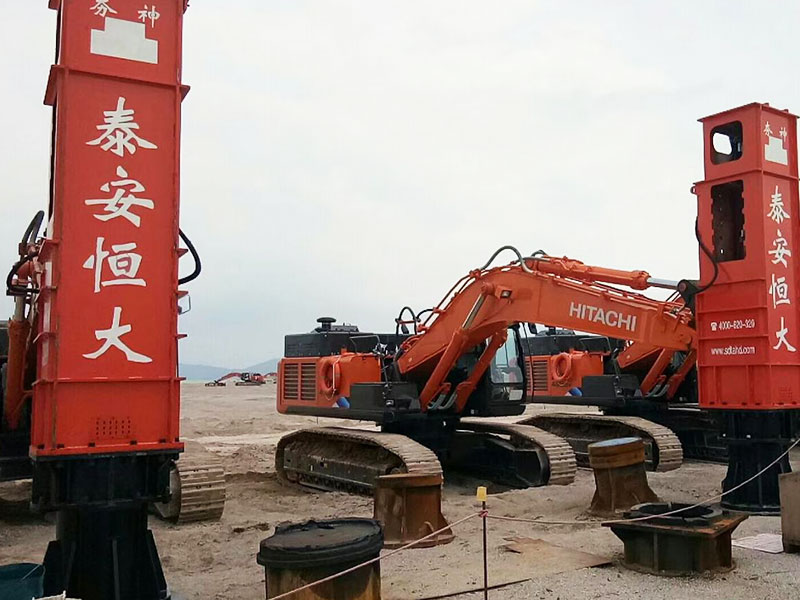
The way in which RIC improves the ground is a “top-down” process, compared to Dynamic Compaction (DC) which is a “bottom-up” process. The first few blows in rapid impact compaction create a dense plug of soil immediately beneath the compaction foot. Further blows advance this plug deeper, which compacts soil in a deeper layer. This process progresses until little further penetration of the compaction foot can be achieved with increasing blows.
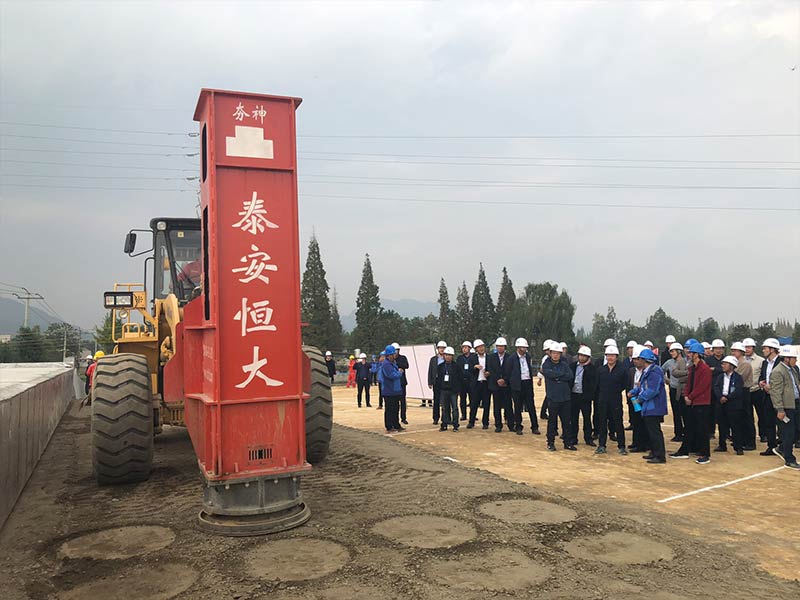
RIC can be used to improve bearing capacity and reduce liquefaction potential of loose soils. The compaction sequence is designed to work from the outside in, so that compaction of the lower zone soils occurs first followed by compaction of the upper zone. Data monitoring during the compaction process and the online display in the operator’s cab enables compaction control, an economic application of the compaction tool, and a work integrated quality control. The total impact depth of the impact foot, the number of blows, and the final settlement of the impact foot after a blow define the stopping criteria.
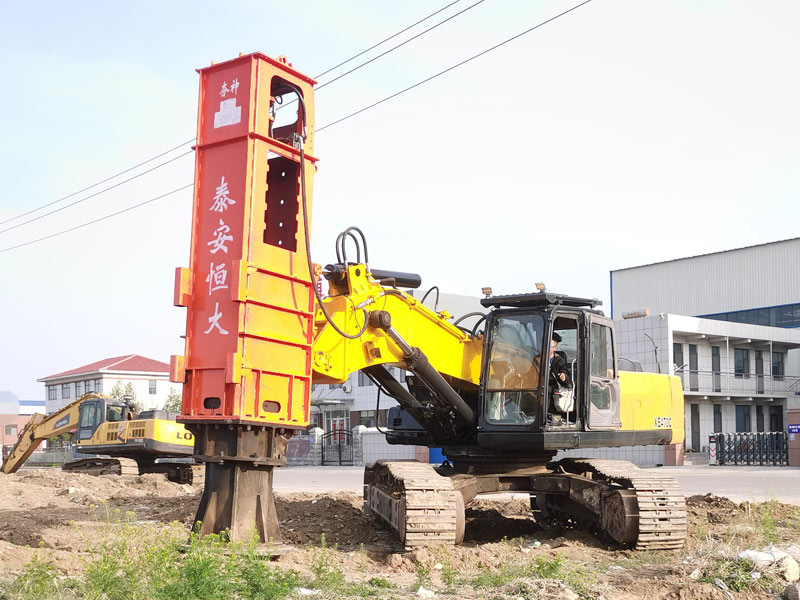
Rapid Impact Compaction (RIC) is an innovative dynamic compaction device mainly used to compact sandy soils, where silt and clay contents are low. RIC closes the gap between the surface compaction methods (e.g. roller compaction) and the deep compaction methods (e.g. deep dynamic compaction) and permitting a middle-deep improvement of the ground. RIC has been used to treat a range of fills of a generally granular nature and some natural sandy and silty soils.
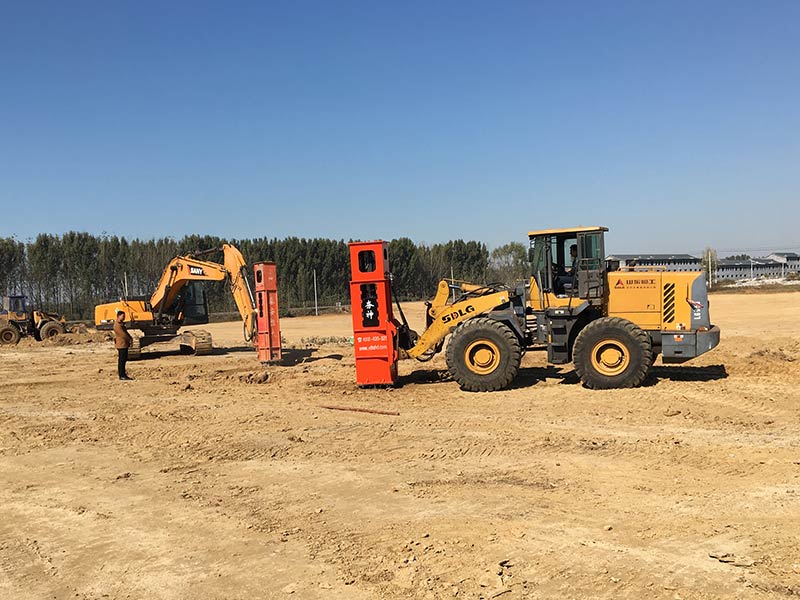
The bearing capacity of the soil is increased after it is treated.
Minimizes settlement to a greater extent and provides uniform support for a floor slab or foundation footing, while controlling vibrations to 2 inches per second within 30 feet of the drop point.
Rapid Impact Compaction consolidates the soil immediately instead of using a surcharge to consolidate the soil under a static weight.
Loose fills or soils can be consolidated immediately without the need to replace the soil.
When the soil is treated by Rapid impact compaction, the stiffness of the upper 10 feet of soil affects the lateral load capacity of a pile. By densifying the upper layers, the lateral load capacity is greatly increased.

